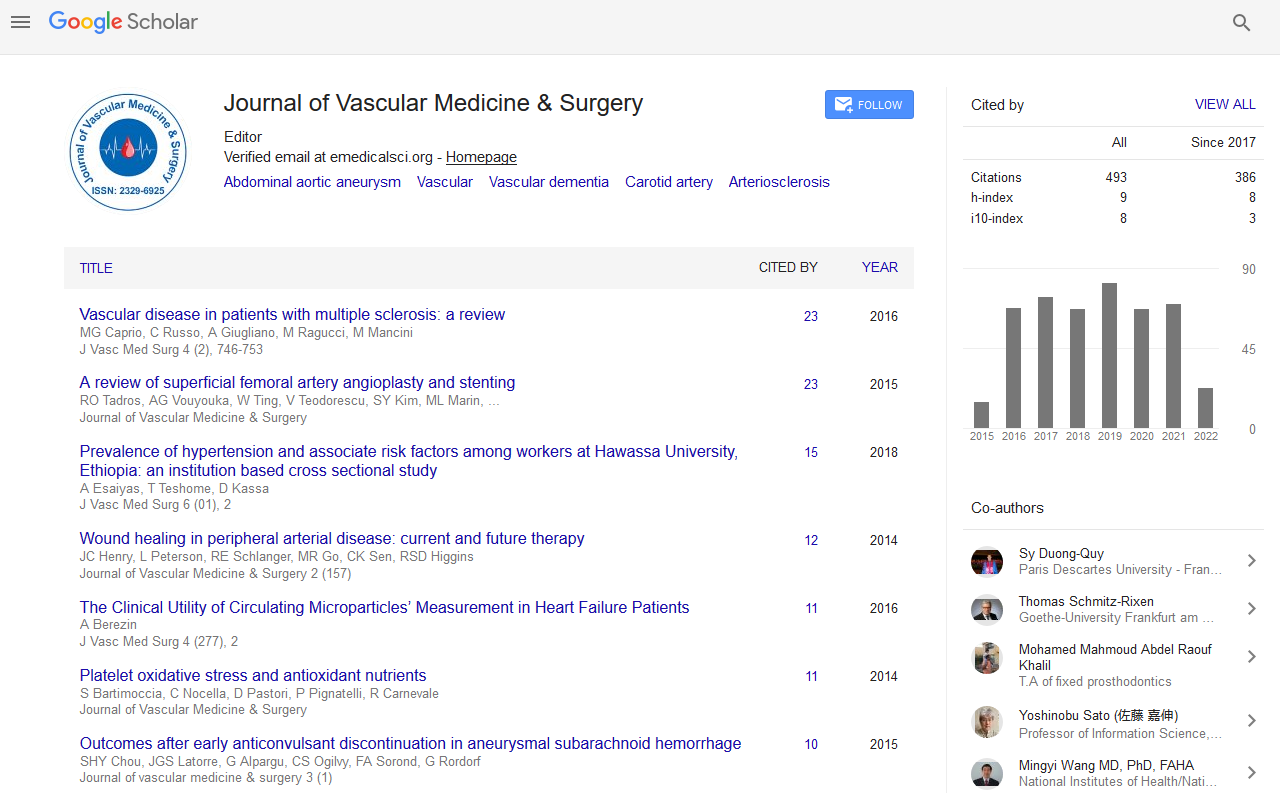Indexed In
- Open J Gate
- Academic Keys
- RefSeek
- Hamdard University
- EBSCO A-Z
- OCLC- WorldCat
- Publons
- Euro Pub
- Google Scholar
Useful Links
Share This Page
Journal Flyer

Open Access Journals
- Agri and Aquaculture
- Biochemistry
- Bioinformatics & Systems Biology
- Business & Management
- Chemistry
- Clinical Sciences
- Engineering
- Food & Nutrition
- General Science
- Genetics & Molecular Biology
- Immunology & Microbiology
- Medical Sciences
- Neuroscience & Psychology
- Nursing & Health Care
- Pharmaceutical Sciences
Abstract
Management of Varicose Veins of the Lower Extremities: A 10-year Institutional Experience
Nwafor IA, Eze JC, Ezemba N, Chinawa JM, Idoko LF and Ngene CN
Background: Varicose veins of the lower extremities affect about 60% of the adult population in America. In Nigeria varicose veins are highly under reported, despite the fact that the disease is not uncommon. A study of varicose veins of the lower extremities, in our institution is therefore justified. Aim: To review the number of cases managed, so as to determine the prevalence, outcome and rate of recurrence. Materials and Method: During the 10-year period (March 2005-2015), a total number of 45 cases were managed. As a retrospective study, the case files of such patients were retrieved and analyzed. The data analyzed were demographic data, epidemiologic-clinical states and outcome. Results: A total number of 45 cases were managed, averaging about 4.5 cases per year. There were 30 males and 15 females with a ratio of 2:1. The age range mostly affected was 21-30 years with 13 (28.90%), followed by 41-50 year with 8 (17.8%) and the least was age above 70 years with 1 (2.22%). The left and right lower limbs were affected in the ratio of 5:2. The great and small saphenous veins were affected in the ratio of 3:1. Indications for surgery were hyper pigmentation, venous ulcer and lipodermatosclerosis. Treatment modalities were conservative (Bisgaard regime) and surgery. Recurrence rate was 5-10%. Conclusion: Varicose veins of the lower extremities are not uncommon but in developing countries like ours it is under reported due to uncoordinated actions of physicians. There are varied modes of presentation. Middle age group are more affected.


